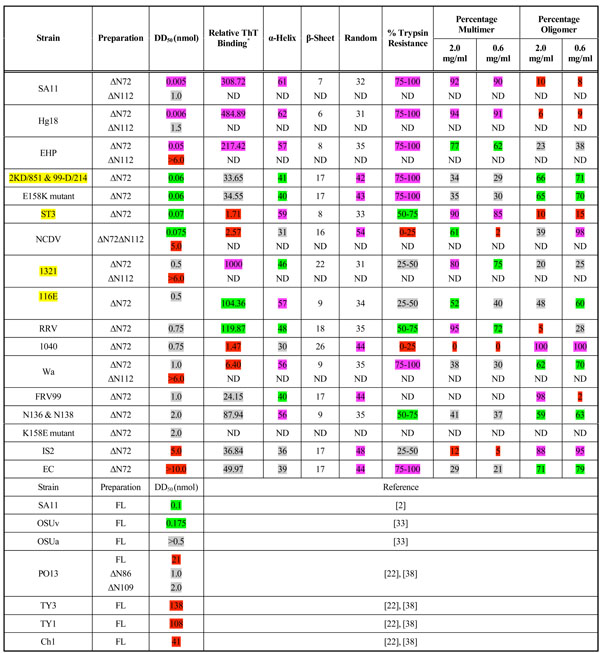 |
DD50 values of NSP4ΔN72 and ΔN112 polypeptides from different rotavirus strains from different species in newborn mice are shown. The DD50 values previously reported by
others for different NSP4 peptides are also shown. The relative ThT fluorescence emission values are with reference to the lowest-binding ΔN72 from strain 1040. The
conformational contents, relative resistance to trypsin digestion, multimerizatio/oligomerization properties of different NSP4ΔN72 peptides are provided. Note the asymptomatic
strains from which the NSP4 is derived for this study are indicated in yellow shade. The level of efficiency of the proteins in each of the properties is classified into 4 grades in
different colour shades. Pink colour refers to either highest efficiency or highest values. Green, gray and red shades denote the decreasing levels of efficiency or the values in the
properties. Though efficient diarrhea inducers exhibit high ThT fluorescence, ∝-helical content, trypsin resistance and efficient multimerization, note a general lack of correlation
among the properties of other proteins. FL, full length, ND, Not Determined, OSUv and OSUa refer to OSU virulent and avirulent strains, respectively. E158K and K158E mutant
proteins are described in the legend to Fig. (1B).